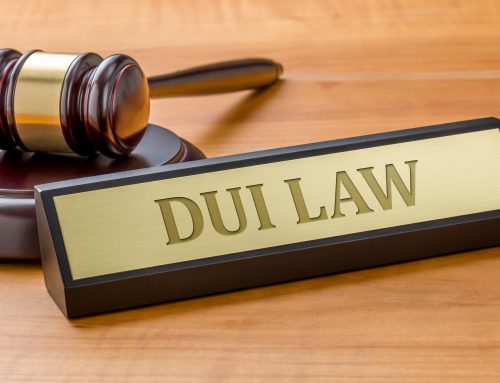Outcome: Not guilty of two counts of possession of a firearm, guilty of DUI. B.S. was facing a state sentence if convicted of the firearm charges but got only a 3 day jail sentence for the DUI.
Description: B.S. was asleep in his car outside of his house late at night after he had locked himself out of his home. His car was running because it was a cold night and he needed the heat to keep him warm. He had been drinking fairly heavily earlier in the night. Police testified that they saw the running car and approached to investigate for the well-being of any occupant. Police say they saw B.S. sitting in the driver’s seat slumped over the center console. There was no one else present in the car. He was asleep and unresponsive to their commands to roll down the window.
When he finally woke up, police asked him to step out of the car. There were police officers on both the driver and passenger side of the car. B.S. was compliant but police indicated that he was stumbling, slurring his words, had a thick tongue and had a strong odor of alcohol. Police determined that he was DUI based on these observations. When B.S. exited the vehicle, police say that they saw a firearm between the center console and the driver’s seat. Mr. Fishman questioned the police officer’s ability to observe the firearm in that location as the officer testified that he made his observations from the passenger side of the vehicle. If that was true, how could he see a gun that was lodged between the driver seat and the raised center console?
The driver side police officer also testified and he admitted that he did not see the firearm when B.S. was removed from the vehicle. So, the officer on the passenger side had to have x-ray vision to see the gun through a raised center console that acted as an armrest while the driver side officer admitted to not seeing the gun, which he would have immediately have seen when B.S. was removed from the vehicle if the gun was in fact located between the driver’s seat and center console.
The reason the driver side police officer did not see the gun is because it was not located between the driver seat and the center console as police testified. Rather, it was in the locked glovebox and B.S. did not have knowledge of its presence. And, the defense did not just have the inconsistent testimony of two officers, but it had defense evidence to corroborate that defense theory of the case. Mr. Fishman called B.S.’s wife who had documentation that she lawfully purchased and registered the gun. In addition, she had a lawful and valid license to carry. Furthermore, B.S.’s wife was the lawful owner of the vehicle and the defense presented evidence to support this claim.
B.S.’s wife testified that she was the lawful owner of the gun and had locked it in the glovebox of her car earlier. She explained that she was outside the night prior cleaning out the garage and placed the gun in the glovebox while cleaning. She forgot that she had placed the gun in the glovebox and left it there overnight. She then left to go out of town the following evening. For that reason, B.S. could not get into the house after he had locked himself out.
The gun was not on B.S.’s person. That is, he was not in actual possession of the gun. Therefore, the Commonwealth had to prove that he was in constructive possession of the gun. Actual versus constructive possession is explained in detail here but essentially constructive possession requires proof that one has knowledge of the object, in this case, the firearm’s presence and that the individual had the ability to exercise conscious dominion and control over the object. If the gun was right next to him between the driver seat and the center console, the evidence would be strong that he had knowledge of its presence and the ability to control it. However, if it was in the locked glovebox of a vehicle owned by his wife and his wife had very recently placed her lawfully owned and registered gun in the glovebox, the prosecution’s case begins to crumble. The court believed the defense witness and found B.S. “not guilty” of both firearm offenses. B.S. was charged with two counts of firearm possession and DUI. The court found him not guilty of both firearm offenses, VUFA Section 6106 and 6108, but guilty of DUI. B.S. was sentenced to serve a mere 3 days in custody for the DUI offense and avoided a state sentence on the firearm charges.
If you or a loved one have been arrested for DUI or possession of a firearm, contact Philadelphia criminal defense attorney Brian M. Fishman immediately for a free consultation concerning your rights.






